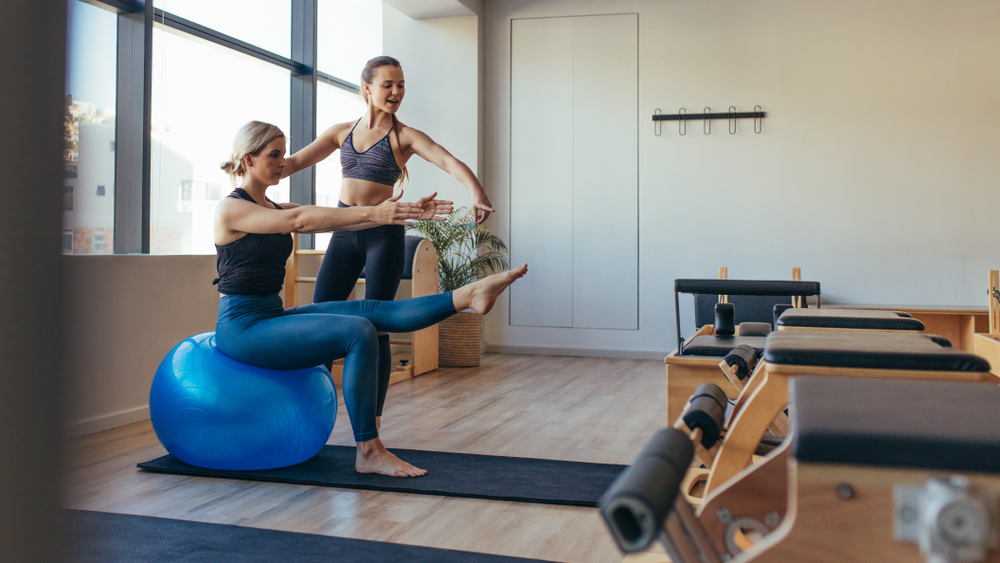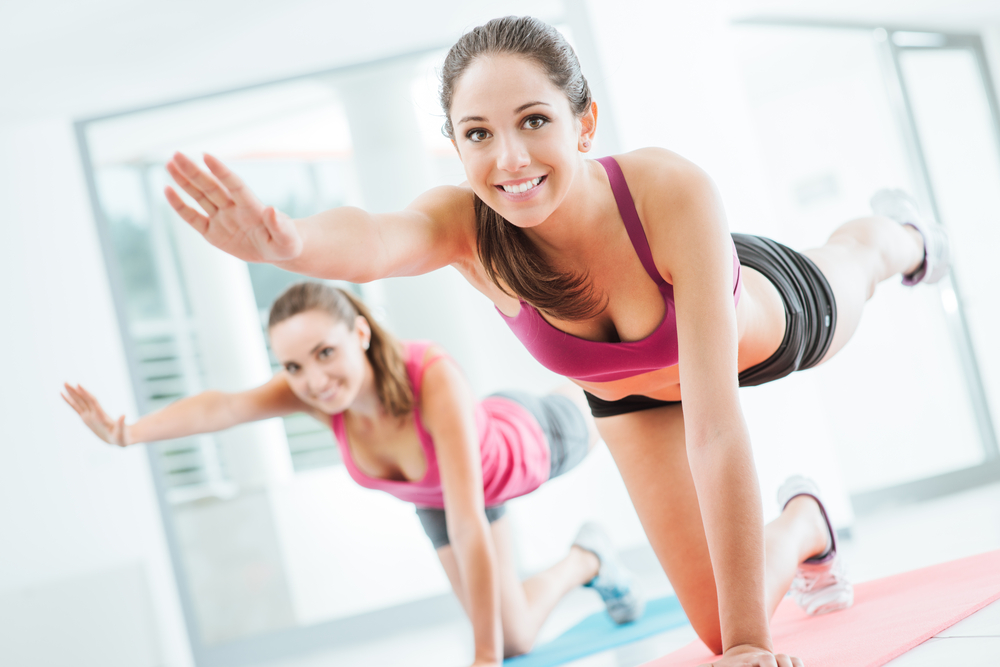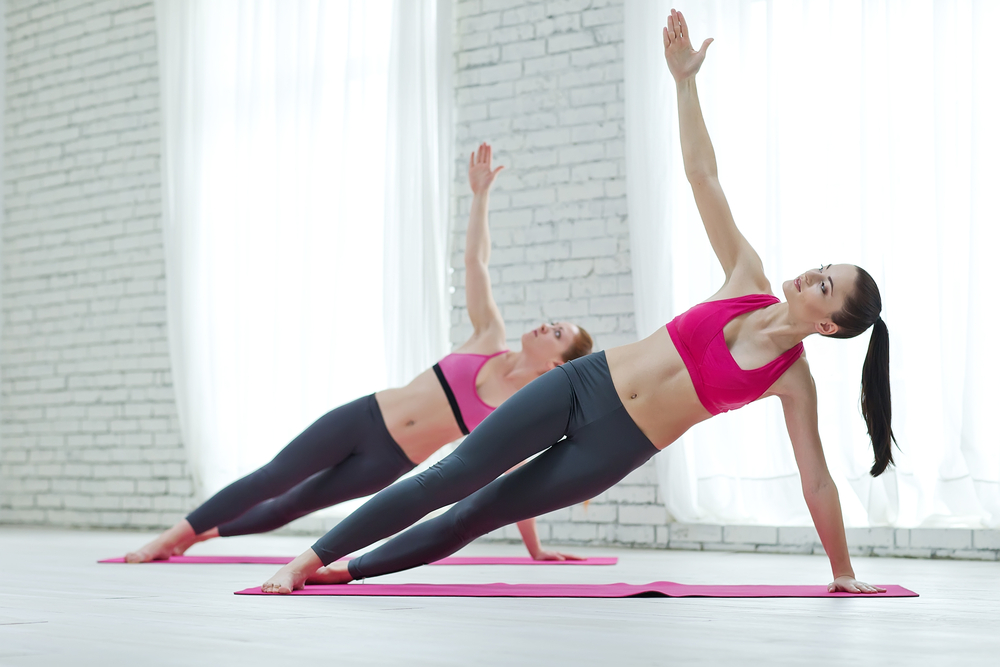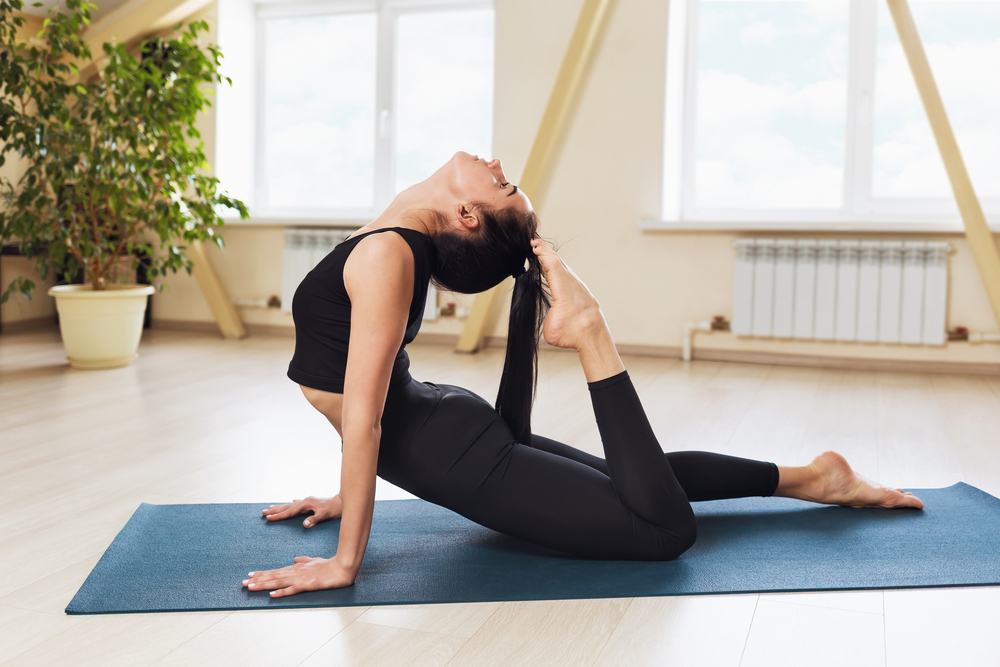If you are somebody who enjoys feeling and looking fit, but just cannot get into the weights section of the gym, don’t have time to hit the gym, or are working on a budget, Pilates might just be the workout routine for you!
You can see results from Pilates in as long as 8 weeks or as little as 3 weeks. The best results can be expected if you do Pilates up to 4 times per week. However, you may want to ease into a routine gradually and start with 2 sessions per week because that is enough to see results in the beginning.
Are you intrigued by the idea of Pilates and want to learn about its benefits, as well as before and after analysis? If so, stay with us!
Contents
Does Pilates Help You Lose Weight?
Any exercise that is done consistently can help you lose weight over time, and Pilates is no exception to this general rule of thumb.
Pilates may not be as affective for weight loss as cardio-based exercises such as swimming, running, or high intensity interval training (HIIT). However, it has its own benefits.
This popular low-impact exercise option is great for those who have issues with their joints, are recovering from an injury, or just want to do some slower, mindful workout routines.

How Often Do I Need to Do Pilates to See Results?
Speaking of losing weight over time, you’ll also see many other results thanks to Pilates.
To see results doing Pilates, it is recommended to practice three to four times per week, for 45 minutes.
| Frequency of Pilates Practice | Duration | Results Over Time |
|---|---|---|
| 2-3 Times a Week | 10 min | · Boost in circulation · Reduction of fatigue · Improvements in brain function |
| Once a Week | 45 min | · Improvements in body awareness · Better balance · More core strength · Higher muscle mass · Better balance · Less back pain (in those who had been experiencing back pain) |
| Twice a Week | 45 min | · Same benefits as once a week · Significant weight loss at 5 months of twice weekly practice |
| Three-to-Four Times a Week (Ideal Frequency) | 45 min | · Same benefits as once and twice a week · Greater strength in the upper and lower body · More lower body flexibility · Better overall physical mobility |
| Every Day | 45 min | · Same benefits as other frequencies · Ability to vary Pilates routines and work on form and other skills (Potential to overtrain if you do not vary your routines) |
You may be looking to add Pilates into your already-established workout routine, or you may be planning on making this your main exercise practice. Either way, it’s important to compare how results might look based on how often you practice Pilates.
Pilates workouts are typically 45 minutes long, but even shorter 10-minute practices can have great benefits when done consistently.
Can Pilates Change Your Body Shape?
Pilates can help change your body shape by making your body leaner and more sculpted. The exercises involved in Pilates work from the inside out to align your body.
You can expect the following areas to be targeted through Pilates:
- Abs
- Glutes
- Hips
While your overall composition might not drastically change, your appearance will be that of a more toned, fit person.
What Muscles Does Pilates Work?
Pilates primarily works on the core muscles of the body, like we mentioned above. What does this look like, though?
- Core: Pilates’ main objective is to strengthen your core. The core impacts much of our bodies’ stability, posture, and balance, and helps us keep our backs strong and pain-free. It can also aid us in all sorts of physical activity throughout our daily lives.
- Glutes: these muscles encompass your buttocks and your hips, which are quite targeted by Pilates movements. It is these 3 glute muscles that contribute to good posture, flexibility, balance when walking, and good overall mobility.
- Abs: more than just the abs, Pilates works the transverse abs which are a deep layer of the core. These muscles not only help to promote balance and good posture, but also help to stabilize the pelvis and spine.
- Lower-Mid Back: many Pilates routines incorporate forward extensions. However, those that help to extend the back muscles are especially beneficial when it comes to strengthening the muscles that help to protect the spine.
Pilates Before and After
You probably hear about the great benefits of Pilates, but how do you know what the results will really look like?
Let’s compare ‘before and after’ Pilates in three different scenarios to see just what you might expect.
Keep in mind, results will vary depending on the person, the diet, and other factors that change from person to person, but this is a good way to get an idea of how Pilates can impact a person.
Pilates Twice a Week Results
If you practice Pilates twice a week, you’ll begin to see that your abilities are improving, and your body feels different.
In contrast to practicing just once a week, the consistency of twice weekly practice allows your body to become more familiar with movements and poses. This allows you to focus on improving and growing as opposed to always trying to ‘get it right.’
Practicing Pilates twice weekly is a great way to increase your flexibility, strength, and even your stamina.
While calories burned will vary per person and their weight, on average you can expect anywhere from 100-200 calories burned in a session.
How long before you begin seeing results from these biweekly practices?
Pilates Before and After 1 month
If you are practicing Pilates twice a week for a whole month, that will give you about 8 sessions, give or take.
If we go back to the calories burned per session, this means that you will burn about 800-1,600 calories in 8 sessions of Pilates.
You realistically won’t be losing weight by practicing Pilates twice a week for a month. However, you will be building muscle tone and adjusting the way your weight is carried on your body.
Pilates Before and After 3 Months
After 3 months, and about 24 sessions, you’ll expect to have burned anywhere from 2,400-4,800 calories. You may have lost a few pounds (likely less than 5) but the progress goes beyond weight loss.
You will be stronger, more flexible, and more able-bodied when it comes to other exercises that will help you lose weight faster, if that is your goal.
Pilates Body vs. Gym Body
It is difficult to compare a Pilates body to a gym body.
Pilates is its own full sector of exercise. Also, a ‘gym body’ can mean a body focused on machine work, cardio work, strength training, or any combination of workout types.
| Pilates Body | Gym Body | |
|---|---|---|
| Benefits | · Flexibility · Deep muscle work · Toned physique · Strength · Stability · Posture · Mental focus & clarity | · Strength · Mental focus · Muscle work · Weight loss (often) |
| Workout Types | Bodyweight or small weight centric, focuses on movement and deep muscle work | Focuses on combining cardio, weights, machines, and other equipment, that may offer more surface-level results |
| Weight Loss | Less of a focus, more of an added bonus to the toning and leaning of the physique | Depends on the type of workout and combination of exercise types, can be easily attained in some cases and more difficult in others |
| Equipment | When it comes to Pilates, all you really need is a mat and your body weight. You could use the following: · A mat · A Pilates reformer · Wrist and/or ankle weights | You can opt for a variety of equipment at the gym, like: · Free weights · Machines for each part of your body · Cardio equipment · A mat |
Overall, a Pilates body will see consistent results with consistent practice, whereas a ‘gym body’ typically has more to consider in order to look a certain way.
Benefits of Pilates
You now know that Pilates helps to target core muscles like abs, as well as back muscles. All of these help to correct and maintain posture, balance, and stability.
On top of all of that, strengthening all of these various muscles at the center of your body helps protect one of the most crucial pieces of your physical body: the spine.
Main Benefits of Pilates:
- Increased flexibility
- Deep muscle engagement
- Toned physique
- Strength throughout the body
- Better balance
- Lessened fatigue
- Boosted circulation
- Increased brain power
Since Pilates is low-impact, injuries are rare. Instead, these workouts help you to gently but deeply condition your body to be stronger, more adaptable, and better protected against injury.
Pilates is great for those trying to find a routine without all the cardio and fast-paced movement that can so often hurt the joints.
In the same way that it helps prevent injury, Pilates can also be used to recover from injury thanks to its gentle but effective nature.
Does Pilates Give You Abs?
A frequently asked question when it comes to Pilates (and most other workouts, really) is ‘does it give you abs?’
Often, the answer is more complex than yes or no.
With Pilates, the answer is a clear yes. Pilates does give you abs.
This exercise strengthens all the muscles that make up our vision of ‘abs’ as it targets the core and abdomen so deeply.
On top of seeing toning over the rest of your body, Pilates will also help you carve the abs that you may desire, over time and consistent practice.





